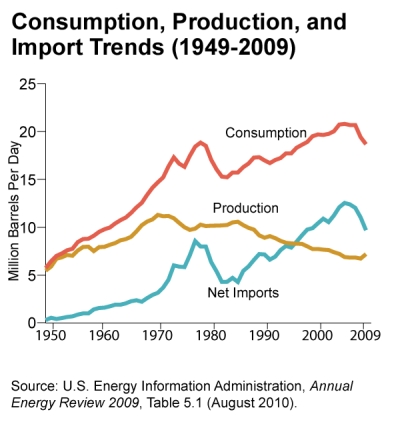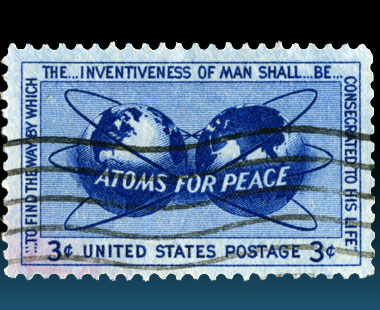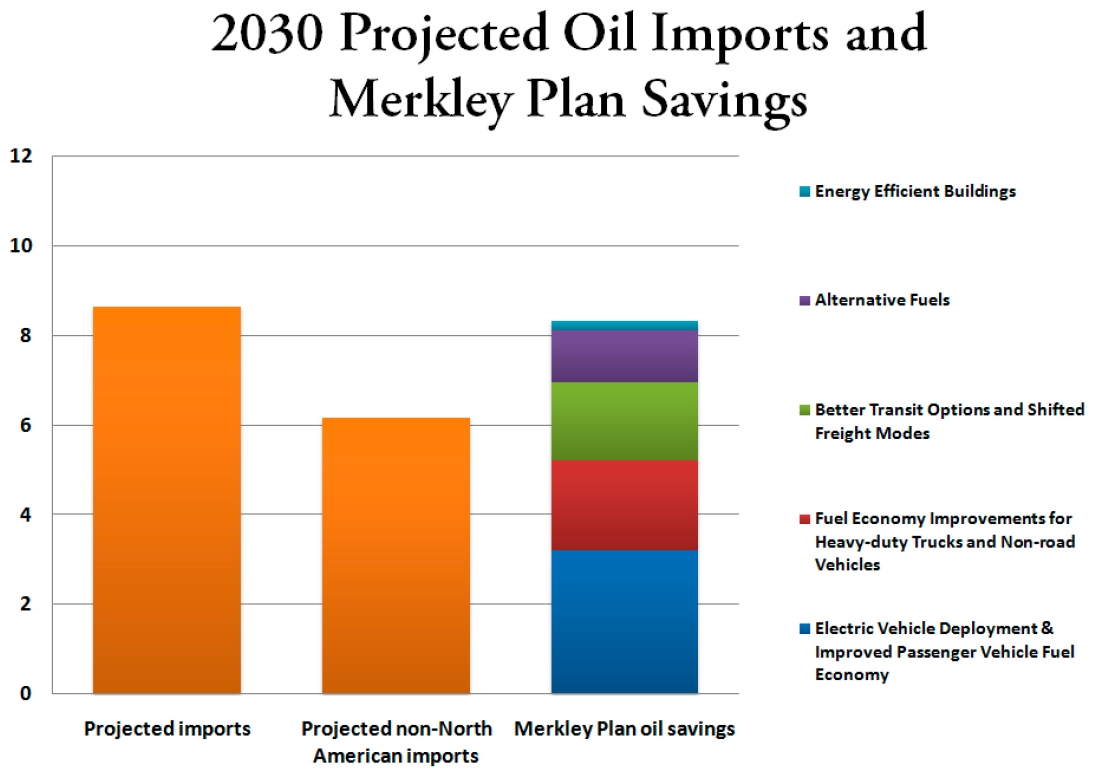[UPDATE: Obama has delivered the speech. It was indeed weak-ass and deserving of an overall thumbs down, but there are more complexities to be analyzed, which I’ll get into in a subsequent post.]
Today, President Obama will deliver an address at Georgetown University on the subject of energy security.
This is, potentially at least, an incredibly rich subject area. It is littered with facts and trends that few Americans understand. Framed properly, it could help voters re-imagine America’s place in a resource-constrained, climate-heated world. It could help lay the foundation for cross-cutting and unconventional political coalitions centered around military readiness and business competitiveness rather than “environmentalism.”
Back down here on earth, though, it looks like the White House is going to half-ass it.
I was on a call yesterday with “senior White House officials” (SWHO) and got a preview. My overall impression is of vintage Obama: groping for the Reasonable Path between Two Extremes. Sometimes that trope works, but Obama has leaned on it far, far too often (see: Libya speech).
In particular, it doesn’t work well for oil. The core truth is that for the U.S., oil problems mostly have to do with supply and oil solutions mostly have to do with demand. America becomes safer from oil by using less. From the Democratic establishment, only retiring Sen. Jeff Bingaman (D-N.M.) is telling the public that truth.
Obama is opting instead for the conventional Dem approach, a shapeless blob of supply and demand, old and new, trivial and meaningful, sure to satisfy none of his opponents and activate none of his supporters. Again. I doubt it will rise above the background “blah blah foreign oil” voters have been hearing since the ’70s.
 The overall goal, in “a little over a decade,” is to reduce U.S. oil imports by one-third. I don’t know if that means one-third less than today’s levels, one-third less than projected imports for 2020, or one-third less as a percentage of overall oil use.
The overall goal, in “a little over a decade,” is to reduce U.S. oil imports by one-third. I don’t know if that means one-third less than today’s levels, one-third less than projected imports for 2020, or one-third less as a percentage of overall oil use.
In 2009, the U.S. imported just over 4.2 billion barrels of “crude oil and products.” That’s a little over half the oil we used. To reduce that number by a third by 2020, we’ll need to be finding 1.4 billion new barrels a year of either domestic supply or “negabarrels,” i.e., barrels not used.
(Just as a side note: the top two U.S. oil suppliers are Canada and Mexico, and Canada’s where the dirtiest stuff is.)
The president will focus on four areas, listed to us in this order:
1. Domestic production.
Yes, this was first.
The lead talking point was a variant on the House Dems’ “use it or lose it” shtick, which has been around for years and, from what I can tell, never really caught on. The Interior Department released a report yesterday showing that “more than two-thirds of offshore leases in the Gulf of Mexico and more than half of onshore leases on federal lands remain idle, neither producing nor under active exploration and development by companies who hold those leases.”
The SWHO said we need “new, better incentives” to lure oil companies into drilling on the commons the public has leased to them.
During the Q&A, I asked why this was listed first, since there are no credible studies showing that U.S. oil, drawn from 2 percent of the world’s reserves, can make a substantial dent in oil or gasoline prices or reduce our vulnerability to price spikes. SWHO, a smart, knowledgeable person, conceded that the “significant gains” will be in efficiency (down at No. 4). Drilling is just a “piece of the puzzle.”
2. Natural gas.
See: Pickens Plan.
3. Biofuels.
As always, the administration loves “advanced” biofuels, because getting advanced is key to winning the future. They aim to break ground on at least four advanced biorefineries in the next two years. After all, America deserves better than … oh, wait, lemme check my notes … ah, I see they love corn ethanol too. Oy.
4. Efficiency.
Here’s where the biggest gains will be had. They’ll mostly be had via auto efficiency standards that have already been hashed out. SWHO promised that the White House would keep working on auto standards for 2017-forward and new standards for heavy trucks. It’s telling that fuel standards (already underway) are the best they can offer on efficiency.
What a better plan would look like
The paucity of imagination shown by Obama’s list is just dismally depressing. It’s telling that he says nothing of electric cars, rail infrastructure, public transit, smart growth, congestion pricing, a gas tax, bicycles, or simple conservation. He is choosing fare straight from the barren cupboard of Beltway conventional wisdom, contenting himself with the tepid “center” of a conversation dominated by the interests of plutocrats. It might garner sober nods on cable news, but the American people deserve something more ambitious, innovative, inspiring, and honest.
To get some sense of what a better oil security plan would look like, check out what Sen. Jeff Merkley (D-Ore.) released last year. It doesn’t bother with increased production at all — it’s purely a plan for how to reduce oil use. Here’s where he gets the savings, and how much:
That’s reducing demand enough to wipe out virtually all oil imports by 2030. And there’s more that could be done.
I really do think that energy security is an area where Obama could make waves. A muscular climate-hawk stance on energy security could shake up some stale partisan debates and generate some new coalitions. But that’s not going to happen if Obama takes this half-ass approach.





